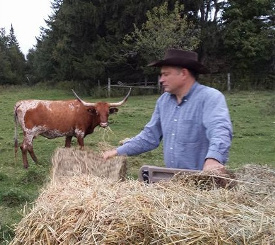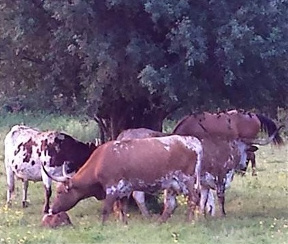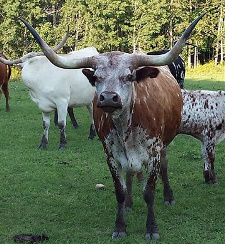
The biggest merit of the Texas Longhorn is it's ability to turn grass and sunshine into tasty nutritious beef. This is largely due to it's unique ability to marble on grass. Most other breeds of cattle do not possess this ability and must be fed large amounts of grain to change their metabolism and force marbling prior to processing. Feeding cattle grain causes the animals system to become acidic, thus promoting the growth of high levels of e-coli; a condition called acidosis.
Texas Longhorns are the direct descendents of the first cattle brought to North America by the Spanish. For most all of their early years in North America they lived and evolved on the range, being shaped by Mother Nature much like a wild animal would have. This resulted in a hardy, vigorous breed with good genetics for disease resistance, calving ease and very few of the many other health care problems found in domestic cattle.


Largely due to its big horns, which were deemed a nuisance in commercial production, the Longhorn has never found itself at the mercy of single trait selection. What this means for a producer is that the Longhorn grows slower and must be kept up to a year longer than commercial breeds in production today. We do not see this as a disadvantage becasue slow growth means a more flavourful beef product; more flavour means happier repeat customers.